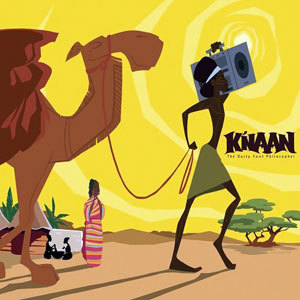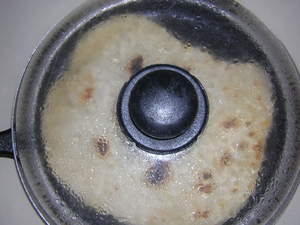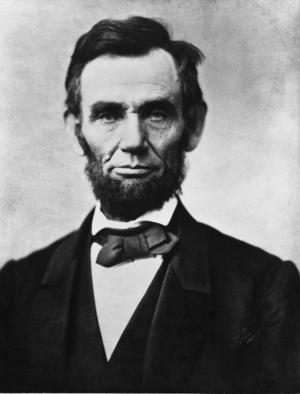“[In Somalia], we would walk without shoes all the time. We understand that the earth is where we’re from, the earth is where we’ll return to. I’ve been wearing shoes since I left home. It’s as small as that, but it’s as significant as that.”
“The biggest protection I received was not that I didn’t get shot – but that I didn’t shoot anybody, I didn’t kill anyone. That’s huge. If you kill somebody, you carry their burden. I’m very fortunate. I have friends who’ve had to [kill] – family too.”
-K’naan Warsame
It is rare in contemporary American society to find a hip hop artist whose verse rings with the same sense of unalloyed truth, selflessness, and purpose that charged that of his great predecessors; immortal names like Bob Marley and Tupac Shakur, spoken with the kind of awed reverence usually reserved for religious figures, seem to preclude contemporary artists from even approaching their totemic significance or their reputation for social consciousness. Instead, in the minds of many, hip hop has come to be defined by whatever new “gangsta rap” album mainstream artists like T.I., Kanye West, MIMS, and Lil’ Wayne churn out. Unfortunately, their music – defined chiefly by self-aggrandizement, drugs, and violence with occasional (but superficial) nods to deeper themes – both perpetuates and glamorizes the “thug life” stereotype ascribed to the genre, and indeed, to black urban culture.
Fortunately, however, there still exists salvation for the nation’s collective musical soul: an underground culture of independent, “conscious” hip hop still thrives, though generally beneath the mainstream pop culture radar. As Canadian Somali poet and hip hop artist K’naan Warsame reminds us in an interview with Colin Smith of the magazine, Socialist Review, “There isn’t a shortage of good music – there’s a shortage of promoting good music.” K’naan, currently residing in Rexdale, Ontario, a suburb of Toronto, is a brilliant example of the persistence of “good” hip hop – that is hip hop that exists to enrich its listeners, not merely to capitalize on the “gangsta” mystique – even in a society that habitually rewards music steeped in negativity and violence.
Born in 1979 and raised in Mogadishu, during the Somali Civil War in the Wardhiigleey district – nicknamed the River of Blood for its extreme reputation for violence – K’naan is no stranger to street violence, or the “gangsta” lifestyle that other hip hop artists too often glorify. Matthew McKinnon, in a Canadian Broadcasting Centre interview with K’naan, reports that the artist “fired his first gun at age eight” and at age 11, he and three of his friends “fled from gunmen in a deadly footrace through Mogadishu.” K’naan survived, but his friends were shot and killed. Later, K’naan nearly lost his older brother, Liban, who was arrested for razing a federal court building, and only saved from the firing squad by the influence of their aunt Magool – one of the nation’s most renowned singers. The artist himself reflects on the rampant violence that gripped Mogadishu as “a fire coming into your house, and you not having a place to exit” (McKinnon).
Many intellectuals such as K’naan’s adoptive father, Abdi Mohamed, were forced to flee the country when the political situation began to deteriorate. Abdi moved to Harlem where he worked as a cab driver, mailing money and – perhaps just as importantly for K’naan – hip hop albums home to Mogadishu. Though he spoke no English, the young artist was an avid listener of American hip hop artists and soon “learned their rhythm, their diction, their mannerisms, their fierceness – all of it.” For K’naan and his peers, hip hop was a means of escaping their grim reality: “Seven, eight – you’re a pretty established human being when you’re that age in Somalia. Everyone is expected to be a linguist, even little children,” K’naan says. “For us, language is what informs the universe. Your articulation is your manhood” (McKinnon).
K’naan’s adoptive mother, Marian Mohamed, worked to procure her family a more physical escape, walking daily to the U.S. embassy to appeal for exit visas. She and her family were finally granted passage in 1991 on the last day of the embassy’s operation, even as the presidency of Mohamed Siad Barre was overthrown by Ethiopian-backed rebel warlords and Somalia collapsed into anarchy. K’naan and his family took the last commercial flight out of Somalia. They lived briefly in Harlem before settling in Toronto.
Hailing from such a distinct and troubled background and steeped in such a rich creative tradition (his grandfather was the talented Somali poet Haji Mohamed, and his aunt the aforementioned singer, Magool), K’naan has a wealth of inner strength and pain that he gives voice through his music. Through his art, K’naan strives to reflect upon and distill meaning from his own experiences, and those of others living in war torn Somalia, stating that “Music is a direct and honest expression and extension of who you are” and that “the events that have shaped me really happened in Somalia.”
Considering all that did happen to K’naan and his family in the River of Blood, it is both surprising and unsurprising that his music career has followed the course it has; considering the constant and pandemic violence in which he was immersed as a child, it would have been all too easy for K’naan to remain rooted in its influence and produce hip hop that parrots the gangsta themes of many of the American artists from whom he drew inspiration. That is not to say he divorces himself entirely from the darker aspects of his past – according to his MTV.com biography, “K’naan brings an enormous dose of realness and urgency to the hip-hop world in a time when people are desperate for it. From a personal and cultural history rooted in poetry, K’Naan widens the traditional hip hop perspective from 9mm and eagle 440’s to AK’s and rocket propelled grenades.”
Fortunately, K’naan’s vision has come away from the crucible of his upbringing galvanized by all its unbearable heat and pressure into something more valuable and enduring than the sum of its violent parts. As Liam Colle of PopMatters puts it, K’naan’s work “teems with the pain of his particular past, but he still manages to universalize his struggles.” That pain plagued K’naan for years after his frantic flight from Somalia, and he was wracked by guilt for his perceived abandonment of his friends and homeland, confessing, “For a long time I thought: How do I justify my day, my life?” Fortunately, K’naan found in his music a means of channeling that pain and guilt into a unified purpose – to raise awareness of the plight of his homeland. For instance, his heart-swelling anthem of personal rebirth and peace, “In the Beginning,” speaks to the capacity for embracing one’s inner voice to save his own soul, and that of an entire nation.
His style, described as the seamless union of “the dissonant traditions of rap, rock, folk, reggae, and African music,” oscillating without a hitch between African folk guitar riffs and fierce rhymes, seeks to enrich as much as to entertain (Colle). As the artist himself puts it, “K’naan means ‘the traveler;’ Warsame means ‘one who carries the words of peace.’ Where I come from, you have to live up to your names” (McKinnon).
Peace is indeed a touchstone of all of his tracks, be it manifest in the energetic yet stately tones of “If Rap Gets Jealous” or his explosively energetic anthem of peace, “In the Beginning.” He purposely refutes the “gangsta” image idealized by his mainstream counterparts, explaining in an interview with Mike Doherty of the Toronto newspaper Eye Weekly,
“All Somalis know that gangsterism isn’t to brag about. The kids that I was growing up with [in Rexdale] would wear baggy [track] suit pants, and a little jacket from Zellers or something, and they’d walk into school, and all the cool kids would be like, ‘Ah, man, look at these Somalis. Yo, you’re a punk!’ And the other kid won’t say nothing, but that kid, probably, has killed fifteen people.
Based on his upbringing in what can be called, without posturing, the most violent neighborhood in the world, and on his realistic understanding of violence, K’naan harshly criticizes the “gangsta” pretentions of his hip hop peers. “It’s tough to boast,” he explains, “when you know the real deal, when you understand violence in its true nature” (McKinnon).
Though he refuses to boast of his dangerous upbringing, he isn’t afraid to draw upon it in exposing the fraudulent nature of the “gangsta” mystique. For example, K’naan references rapper 50 Cent, famous for lyrics like, “You ain’t a gangsta / I should cut ya, cock back and bust ya or stomp you out cause / We don’t trust ya.” In his own sardonic track, “What’s Hardcore,” from his 2005 album, The Dusty Foot Philosopher, K’naan mercilessly exposes the foolishness of portraying street violence as admirable or “hardcore”:
“We begin our day by the weight of the gun,
rocket propelled grenades blow you away if you front.
We got no police ambulances or fire fighters,
we start riots by burning car tires.
They looting, and everybody starting shooting.
So what’s hardcore, really? Are you hardcore? Hmm.”
Considering the circumstances of his upbringing in the River of Blood, it seems to be no exaggeration when K’naan spits, “If I rhymed about home and got descriptive, / I’d make 50 Cent look like Limp Bizkit.”
Personal gaffs are rare in K’naan’s work, however, and his main focus is on broader themes of peace and change. For instance, K’naan’s 2005 track, “Soobax,” translating literally to “come out” is a kind of “peaceful battle cry,” and a castigation of the warlords and armed thugs that vie for control over Mogadishu, including the new “water warlords” that capitalize on the African continent’s worsening water shortage (Yusuf, International Herald Tribune). In Somali, K’naan calls upon the warlords to “Come out of my country / you’ve spilled enough blood / you have killed too many people / you have caused a ton of trouble / come out of my country… ” He continues in English to say, “I wanna talk to you directly / Somalia needs no gunmen / Mogadishu used to be a place / where the world would come to see / what to do / where to go / I got to be a refugee / Somalia needs no gunmen…” (emphasis added).
Though Somalia continues to be ravaged by warlords vying for hegemony, K’naan has no plans of giving up in his quest to raise awareness, both in Somalia and around the globe, on the direness of his nation’s situation. Even though the warlords and gunmen are unlikely to heed his words and lay down their arms, K’naan still hopes to make an impact on those with open minds, and on the next generation of Somali youth – child soldiers like many of his own friends growing up in Mogadishu. Indeed, it appears that his art is having an impact: K’naan says of filming the music video for “Soobax” – shot “among crowds of exiled Somalis in Mombasa and Nairobi’s Eastleigh (or ‘Little Somalia’) district because the likelihood of his murder in Mogadishu was too great to chance” – “One of those homeless kids in the video that was dancing actually hid his machete in his coat pocket when he heard my music. That’s why my long term goal is to use whatever fame I get to help change the situation in my region” (McKinnon).
The seeds of that change may already be taking root: K’naan’s music has recently found its way out from underground into more mainstream channels – “Soobax” appears on the soundtrack of a bestselling soccer video game, “FIFA 2006,” and more recently, “In the Beginning” rounded out the conclusion of the 2008 box office hit, “Harold and Kumar Escape from Guantanamo Bay.” As K’naan’s popularity and listener base grows, so too does his potential to expose the atrocities of the warlords in Somalia and awaken the international community to the need for change. By appealing to the youth of North America and European countries, as well as that of his native country, K’naan is sowing the seeds of peace in the fertile soil of the next generation.
Sources:
Works Cited
Warsame, K’naan. The Dustyfoot Philosopher. BMG Music, 7 June 2005.
McKinnon, Matthew. Kicking up Dust: The remarkable hip-hop odyssey of Toronto’s K’naan.
30 June 2005. Canadian Broadcasting Corporation. 4 May 2008. .
K’naan – Full Biography. MTV. 4 May 2008.
< http://www.mtv.com/music/artist/knaan/artist.jhtml#bio>.
Warsame, K’naan. Talking Back to the Empire: From Mogadishu to Rexdale and back again. 1 Feb. 2007. NOW Magazine. 4 May 2008.
< http://www.nowtoronto.com/issues/2007-02-01/cover_story.php>.
Smith, Colin. Lyrical warrior: K’Naan. July 2007. Socialist Review. 5 May 2008 .
Desrosiers, Kendra. K’naan Interview. 15 June 2007. The Source. 5 May 2008 .
Colle, Liam. NOW HEAR THIS!: K’naan. 3 Nov. 2005. PopMatters. 5 May 2008 .







